Fabian Szepanowski, PhD

Exploring the Relationship Between IVIg and Lysophosphatidic Acid (LPA) as Potential Biomarker in Chronic Inflammatory Demyelinating Polyneuropathy
Project summary
Chronic inflammatory demyelinating polyneuropathy (CIDP) is an acquired chronic autoimmune disorder of the peripheral nervous system. A broad spectrum of subtypes has been described, and its heterogeneity poses challenges to diagnostics, treatment, and pathogenetic concepts. Thus, available parameters to assess disease activity in CIDP are still limited. The development and validation of new diagnostic and disease activity biomarkers is an acknowledged priority in CIDP research.
In CIDP, immune cells infiltrate the peripheral nerves and cause damage to axons and their insulating myelin sheaths built by Schwann cells, the myelinating glial cells of the peripheral nerve. Aside from direct immune-mediated cellular damage, the inflammatory milieu is likely to impact the proper functioning of Schwann cells through a process termed Schwann cell dedifferentiation. One such inflammatory cue is a lipid messenger called lysophosphatidic acid (LPA). It is released by immune cells and known to contribute to peripheral nerve damage – in particular by promoting Schwann cell dedifferentiation.
Intravenous immunoglobulins (IVIg) are a first-line treatment option for CIDP. Given the proven anti-inflammatory potency of IVIg in CIDP, we hypothesize that a decrease in LPA levels may be associated with amelioration of neuroinflammation. We will investigate LPA serum levels in treatment-naïve CIDP patients and at different time points following IVIg administration in order to understand whether LPA levels are correlated with the clinical presentation and treatment response.
Secondly, we will employ a rodent model of chronic autoimmune neuropathy to investigate whether modulation of LPA signaling is associated with the adoption of a myelinating Schwann cell phenotype and thus remyelination.
Collectively, these findings may improve our understanding of the multifaceted mode of action of IVIg and identify a novel biomarker for disease severity and treatment response to IVIG in CIDP, while simultaneously exploring a potential therapeutic target that could be specifically addressed to promote remyelination.
Biographical sketch
Fabian Szepanowski studied biology at the Heinrich-Heine-University Düsseldorf from 2009 2014. His Master thesis focused on the impact of sphingosine-1-phosphate receptor modulation on peripheral nerve regeneration. In subsequent years, he developed expertise in the field of neural regeneration under supervision of Prof. Dr. Bernd C. Kieseier at the Department of Neurology in Düsseldorf, culminating in his PhD thesis on “Therapeutic approaches for the improvement of peripheral nerve regeneration”. By late 2018, he joined the lab of Prof. Dr. Dr. Mark Stettner within the Department of Neurology at the University Medicine Essen to pursue his interest in neural regeneration and to broaden his knowledge on inflammatory neuropathies. He aims to combine relevant aspects of both regenerative biology and neuroimmunology in order to develop novel therapeutic avenues.
To achieve this ambitious goal, the research group utilizes a wide range of methods, ranging from sophisticated cell culture models to relevant animal models of nerve injury as well as acute and chronic neuritis. In addition, Fabian is a founding member of the German competence network peripheral nerve (Kompetenznetz Peripherer Nerv KKPNS), a nationwide biobank cohort and registry of patients with immune-mediated neuropathies, in particular CIDP. He has published more than 20 papers in peer-reviewed journals, including 11 first-author contributions.

